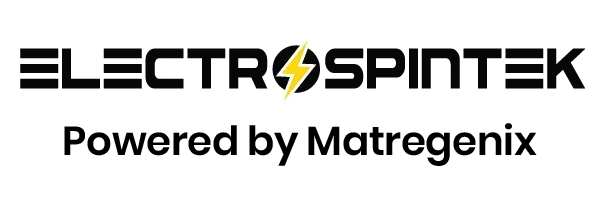Nanofibers are changing the game across multiple industries stealthily but powerfully. These ultra-thin fibers, often crafted via electrospinning, are finding their way into air filtration units, medical devices, electronics, and even energy storage systems. At Electrospintek, we believe the applications of nanofiber are not just an emerging trend they’re a revolution in the making.
Let’s dive into the compelling world of industrial nanofibers, where innovation meets practicality.
What Makes Nanofibers So Special?
Before exploring the key applications, it’s worth understanding why nanofibers are garnering such attention. Typically ranging from 50 to 500 nanometers in diameter, nanofibers offer:
- High surface area-to-volume ratio
- Excellent mechanical strength
- Superb flexibility
- Tunable porosity
- Compatibility with various materials
These properties make them ideal advanced materials for industry, offering tailored solutions to complex engineering challenges.
1. Air and Liquid Filtration: The First Line of Defense
One of the most prevalent applications of nanofiber is in filtration. Whether it’s air, water, or industrial chemicals, nanofiber membranes provide superior performance due to their ultra-fine structure.
Use Cases:
- HEPA and HVAC filters in homes, hospitals, and cleanrooms
- Face masks and PPEs for pandemic preparedness
- Industrial oil-water separation systems
- Desalination and wastewater treatment membranes
Thanks to electrospun nanofibers, filters now trap finer particles without sacrificing airflow a monumental improvement in both safety and efficiency.
2. Medical and Healthcare Applications: Healing at the Nanoscale
In the biomedical realm, nanofibers have opened new pathways for drug delivery, wound healing, and tissue engineering. Their resemblance to the extracellular matrix makes them perfect scaffolds for cell growth.
Industrial Nanofiber Applications in Healthcare:
- Nanofiber-based wound dressings with antimicrobial properties
- Controlled drug release systems
- Tissue engineering scaffolds for skin, bones, and even organs
- Biosensors for rapid diagnostics
The fusion of nanotechnology in industry and healthcare is creating personalized and precision-based medical treatments like never before.
3. Energy Storage and Conversion: Powering the Future
Energy is the heartbeat of modern society. And here’s where applications of nanofiber truly shine. Nanofibers are redefining energy storage solutions, especially in lithium-ion batteries, fuel cells, and supercapacitors.
Where They Fit:
- Nanofiber electrodes improve energy density in batteries
- Enhanced electrolyte membranes in fuel cells
- Supercapacitor components with better charge-discharge rates
- Solar cell substrates for increased photovoltaic efficiency
As Electrospintek continues to innovate, electrospun nanofibers are paving the way for greener, more efficient energy technologies.
4. Electronics and Smart Textiles: Lightweight, Strong, and Smart
Think wearables, flexible displays, and advanced sensors. In the world of electronics, lighter, stronger, and smarter is always better. Nanofibers offer a unique combination of mechanical strength and electrical conductivity.
Key Applications Include:
- Conductive fabrics for wearable technology
- Sensors for motion, temperature, or biochemical detection
- Dielectric layers in flexible printed circuits
- Transparent electrodes in touch screens and displays
From your gym shirt to your smartphone screen, industrial nanofibers are working behind the scenes to bring more intelligence to everyday objects.
5. Automotive and Aerospace: Lightweight Materials with Heavy Performance
Both automotive and aerospace sectors are obsessed with weight reduction without compromising durability or performance. Nanofiber-based composites are the answer.
Benefits in Transport Industries:
- Nanofiber-reinforced resins and polymers for chassis and body panels
- High-strength interior components
- Sound-dampening and vibration-absorbing materials
- Filtration systems for engines and cabin air
These advanced materials for industry not only cut down fuel consumption but also enhance safety and comfort.
6. Environmental Protection: Clean Tech for a Cleaner World
From pollution control to carbon capture, nanofibers are being employed in various green technologies. Their surface functionality and porosity make them excellent tools for capturing harmful pollutants.
Eco-Friendly Applications:
- Air pollution filters for urban environments
- Heavy metal and dye removal in industrial wastewater
- Photocatalytic nanofiber mats for environmental remediation
- CO₂ adsorption in carbon capture systems
Electrospintek supports sustainable development goals by leveraging nanotechnology in industry to create eco-conscious solutions.
7. Food Packaging and Preservation: Fresh Thinking
Here’s an area not many people think about applications of nanofiber in food safety. Nanofibers are making waves in active food packaging, extending shelf life and preventing contamination.
Notable Uses:
- Antibacterial food wraps infused with essential oils
- Oxygen- and moisture-absorbing layers in food pouches
- Smart packaging with spoilage detection capabilities
These innovations are helping reduce food waste while ensuring consumer safety.
8. Construction and Infrastructure: The Smart Build
Even the bricks-and-mortar world isn’t immune to the touch of nanotechnology. Nanofiber-reinforced materials are enhancing building longevity and performance.
Use Cases:
- Crack-resistant coatings and paints
- Thermal insulation materials with low conductivity
- Nanofiber meshes for concrete reinforcement
- Water-repellent barriers for roofing and waterproofing
By improving durability and energy efficiency, industrial nanofibers are adding intelligence to the construction world.
The Electrospintek Edge: Innovation in Every Strand
At Electrospintek, we’re pushing the envelope of what nanofibers can do. With years of expertise in electrospun nanofibers, we cater to diverse industries from medical and filtration to energy and electronics.
We believe the future lies in advanced materials tailored to precise needs, and our commitment is to offer scalable, customizable, and sustainable nanofiber solutions for every challenge.
Final Thoughts: The Future Is Nano-Enabled
From boosting air quality to powering next-gen devices, the applications of nanofiber are as versatile as they are vital. Their adaptability, functionality, and sheer potential are driving innovation across sectors quietly transforming the very fabric of modern industry.
As technology continues to evolve, one thing is certain: industrial nanofibers aren’t just part of the future they’re shaping it.
